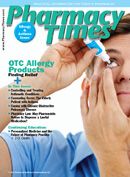Publication
Article
Pharmacy Times
Case Studies
Author(s):

CASE ONE Opioid Dependence
RT is a 54-year-old man who has recently moved to the area and comes to the pharmacy as a new customer. He presents a prescription for Suboxone (buprenorphine HCl/naloxone HCl dihydrate) 8/2 mg, take 2 tablets daily, to the pharmacy intern and mentions he will come by tomorrow to pick up the prescription. The pharmacy intern ensures that the physician is authorized to prescribe Suboxone by verifying the prescription contains the unique “X” identifying number and Drug Enforcement Administration number. While processing the prescription, the intern notices that Suboxone not only has buprenorphine but also naloxone in the tablet. The intern asks the pharmacist, “Why is there naloxone in the tablet? On my emergency medicine rotation, a patient who overdosed on narcotics was given naloxone intravenously to reverse the overdose. Won’t this make RT suffer from symptoms of withdrawal?”
How should the pharmacist respond to the pharmacy intern? How should the pharmacist counsel RT on the proper use of Suboxone tablets?
CASE TWO Type 2 Diabetes Mellitus
TW is a 57-year-old Mexican man with type 2 diabetes mellitus diagnosed 5 years ago. He comes into the pharmacy today to refill his diabetes medications. He currently takes metformin 1000 mg twice daily and glyburide 10 mg daily. Two hemoglobin A1C values—7.5% and 7.3%—obtained 6 months apart over the past year demonstrate suboptimal glycemic control. TW tells the pharmacist that his fasting blood sugars have mostly fallen between 132 and 155 mg/dL over the past several weeks. He seems discouraged and frustrated today because he has been adherent to his medications and has made good effort in modifying his lifestyle. TW mentions to the pharmacist, “Back home we use prickly pear cactus for diabetes. I am sick of these pills, they are not helping me. I should just start eating prickly pear cactus to see if that helps my sugar.”
How should the pharmacist respond to TW? Are there any potential drug interactions between prickly pear cactus and TW’s current medications?
ANSWERS
Case 1: Suboxone is a tablet with a combination of 2 active ingredients—buprenorphine and naloxone—in a 4:1 ratio. Buprenorphine is a partial mu-receptor agonist, and thus reduces opioid cravings and withdrawal symptoms. Naloxone is an opioid antagonist that is commonly used intravenously to counteract the effects of opioid overdose. Suboxone is administered sublingually to avoid first-pass metabolism of buprenorphine, allowing therapeutic concentrations to be achieved. Naloxone is poorly absorbed from both the sublingual and oral route, however; therefore, notable concentrations will not be achieved when used as prescribed for opioid dependence. The pharmacist should notify the intern that the purpose of naloxone in the Suboxone tablet is to discourage diversion and misuse of the tablets. Should a person who has recently taken opioids or who is dependent on full opioid agonists crush and inject Suboxone tablets, the antagonistic properties of naloxone will predominate and will cause withdrawal symptoms. The pharmacist should counsel RT regarding the proper administration technique to ensure optimal absorption of buprenorphine from the sublingual route. RT should make sure his mouth is moist and, if needed, drink water prior to placing the Suboxone tablets under his tongue. RT should place both tablets under his tongue, one on the left side and one on the right side and leave them in place until fully dissolved, generally 5 to 10 minutes. RT should also refrain from talking, as this may interfere with absorption, as will chewing or swallowing the tablet.
Case 2: Prickly pear cactus (PPC) (also known as opales, nopal cactus, and opuntia) is a complementary alternative medicine used in the Mexican, Mexican- American, and Hispanic cultures as a treatment for type 2 diabetes mellitus. Although data suggest 100 to 500 g of broiled PPC may lower blood glucose in patients diagnosed with type 2 diabetes mellitus, little is known about its long-term efficacy and safety. Proposed mechanisms of action of PPC include slowing carbohydrate absorption from the gastrointestinal tract due to high fibrous polysaccharide content and improving glucose utilization by enhancing insulin sensitivity. PPC has been reported to interact with prescription antidiabetic drugs, including sulfonylureas and metformin, causing significant hypoglycemia. The pharmacist should encourage TW to discuss his diabetes treatment with his physician given his suboptimal control and lack of data supporting long-term use of PPC. TW should also be made aware that consuming PPC may lead to additive glucose lowering and may put him at risk for hypoglycemia, given the potential interaction with both of his current medications. As TW may possibly start taking PPC, the pharmacist should review the common signs and symptoms of hypoglycemia and the process of managing hypoglycemia with TW. TW should monitor his blood glucose closely and report any hypoglycemic events to his physician immediately.
function showAnswer() {document.getElementById("answer").style.display = 'block';document.getElementById("link").style.display = 'none';}
Dr. Coleman is an associate professor of pharmacy practice and director of the pharmacoeconomics and outcomes studies group at the University of Connecticut School of Pharmacy.







